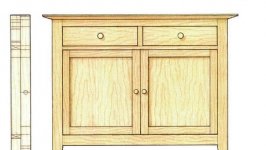I "might" see that in small residential kitchens, but it would never fly in the huge spaces in the commercial market. I would think that they would use a laser measurer at bare minimum, even if the still recorded those measurements by hand/on paper. This looks far more professional to the client and that alone has value.
At the shop where I work, that kind of thing is done with lasers and recorded on a tablet, which can be imported to other devices. I have no idea what brand they use though, not my thing. I only see the end result. Counter tops on especially long walls can be pre-shaped in the shop, saving time for the installers. This also applies to curved or angled walls too.
Many times these types of things are called out on the drawings as 45 degrees, but can be as much as a degree off in real life. The framers don't get it right, but it "looks" like what was specified. You run 12 or 15 feet away from an origin point of an angle that is a degree off and see how far out of shape you would be...
A guy with a tape measure is never going to see that. He would have to rely on templating by hand.
Yes, it works (to some degree anyway) that's how it was done for decades, but there is a better way.
I don't cut radius wall plates with a trammel and a router anymore either [wink] for the same reason, there is a better way.

